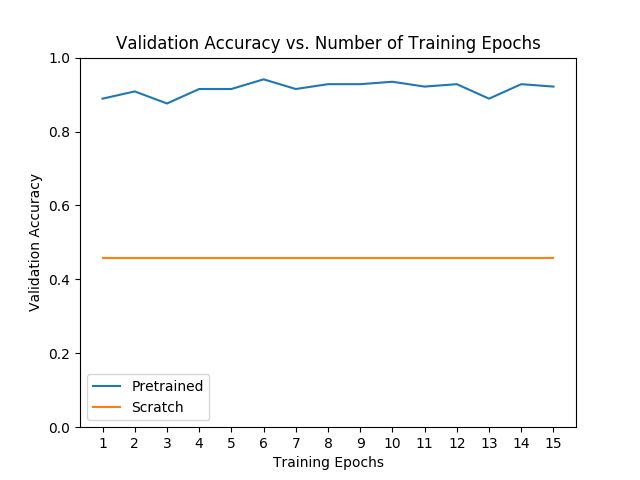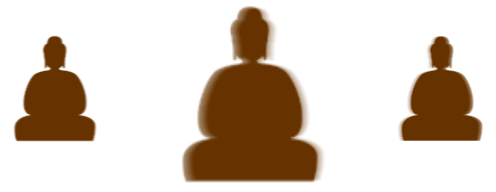PyTorch模型微调:汽车图片分类
点击上方“AI搞事情”关注我们
本教程基于官方文档,探讨如何利用PyTorch预训练模型进行模型微调和特征提取,主要使用torchvision模型进行微调(也可以尝试torch.hub加载模型进行微调),所有使用的预训练模型都已经预先在1000类的magenet数据集上训练完成。本文所涉及的卷积神经网络结构均为近些年最为经典的网络模型,并通过微调的方式使其适用于新的图片分类任务。
在本文中,我们将执行两种类型的迁移学习:模型微调和特征提取。在模型微调中,我们从一个预训练模型开始,然后为我们的新任务更新所有的模型参数,实质上就是重新训练整个模型。在特征提取中,我们从预训练模型开始,只更新产生预测的最后一层的权重。之所以称为特征提取,是因为我们将预训练的CNN用作固定的特征提取器,并且仅更新预测的输出层。有关迁移学习的更多技术信息,可参见CS231n课程。
通常,这两种迁移学习方法都遵循以下几个步骤:
加载预训练模型进行初始化
重写最后一层,使其具有与新数据集类别数相同的输出数
为优化算法定义我们想要在训练期间更新的参数
运行训练迭代的步骤
from __future__ import print_function
from __future__ import division
import torch
import torch.nn as nn
import torch.optim as optim
import numpy as np
import torchvision
from torchvision import datasets, models, transforms
import matplotlib.pyplot as plt
import time
import os
import copy
print("PyTorch Version: ",torch.__version__)
print("Torchvision Version: ",torchvision.__version__)
输出:
PyTorch Version: 1.2.0
Torchvision Version: 0.4.0
输入
以下为需要修改的超参数。我们使用AI研习社看图识车竞赛的数据集,共三类:0=奥迪 1=奔驰 2=宝马(官方文档数据集hymenoptera_data,包含蜜蜂和蚂蚁两类),预处理文件夹结构,使其适用于 ImageFolder 加载方式,不需要我们自己编写数据加载类。下载数据并设置 data_dir 为数据集的根目录。model_name是为模型名称,须从以下列表中选择:
[resnet, alexnet, vgg, squeezenet, densenet, inception]
其他设置如下:num_classes为数据集的类别数,batch_size是训练的batch大小,可以根据计算机的计算能力进行调整,num_epochs是我们想要运行的训练epoch数,feature_extract 是定义选择模型微调还是特征提取的布尔值。如果feature_extract = False,将微调模型,并更新所有模型参数。如果feature_extract = True,则仅更新最后一层的参数,其他参数保持不变。
# Top level data directory. Here we assume the format of the directory conforms
# to the ImageFolder structure
data_dir = "./data/hymenoptera_data"
# Models to choose from [resnet, alexnet, vgg, squeezenet, densenet, inception]
model_name = "squeezenet"
# Number of classes in the dataset
num_classes = 3# Batch size for training (change depending on how much memory you have)
batch_size = 8# Number of epochs to train for
num_epochs = 15# Flag for feature extracting. When False, we finetune the whole model,# when True we only update the reshaped layer params
feature_extract = True辅助函数
在编写训练模型的代码之前,需要先定义一些辅助函数,如:训练验证、设置更新的参数。
模型训练和验证代码
train_model函数处理给定模型的训练和验证。具体的参数包括:PyTorch模型,数据加载器,损失函数,优化器,训练和验证epoch数,以及当模型是否含Inception 的布尔标志。is_inception 标志用于容纳 Inception v3 模型,因为该结构使用了辅助输出,并且整体模型损失涉及辅助输出和最终输出的计算。这个函数训练指定数量的epoch,并且在每个epoch之后运行完整的验证步骤。它还跟踪最佳性能的模型(从验证准确率方面),并在训练结束时返回性能最好的模型。在每个epoch之后,还打印训练和验证正确率。
def train_model(model, dataloaders, criterion, optimizer, num_epochs=25, is_inception=False):
since = time.time()
val_acc_history = []
best_model_wts = copy.deepcopy(model.state_dict())
best_acc = 0.0
for epoch in range(num_epochs):
print('Epoch {}/{}'.format(epoch, num_epochs - 1))
print('-' * 10)
# Each epoch has a training and validation phase
for phase in ['train', 'val']:
if phase == 'train':
model.train() # Set model to training mode
else:
model.eval() # Set model to evaluate mode
running_loss = 0.0
running_corrects = 0
# Iterate over data.
for inputs, labels in dataloaders[phase]:
inputs = inputs.to(device)
labels = labels.to(device)
# zero the parameter gradients
optimizer.zero_grad()
# forward
# track history if only in train
with torch.set_grad_enabled(phase == 'train'):
# Get model outputs and calculate loss
# Special case for inception because in training it has an auxiliary output. In train
# mode we calculate the loss by summing the final output and the auxiliary output
# but in testing we only consider the final output.
if is_inception and phase == 'train':
# From https://discuss.pytorch.org/t/how-to-optimize-inception-model-with-auxiliary-classifiers/7958
outputs, aux_outputs = model(inputs)
loss1 = criterion(outputs, labels)
loss2 = criterion(aux_outputs, labels)
loss = loss1 + 0.4*loss2
else:
outputs = model(inputs)
loss = criterion(outputs, labels)
_, preds = torch.max(outputs, 1)
# backward + optimize only if in training phase
if phase == 'train':
loss.backward()
optimizer.step()
# statistics
running_loss += loss.item() * inputs.size(0)
running_corrects += torch.sum(preds == labels.data)
epoch_loss = running_loss / len(dataloaders[phase].dataset)
epoch_acc = running_corrects.double() / len(dataloaders[phase].dataset)
print('{} Loss: {:.4f} Acc: {:.4f}'.format(phase, epoch_loss, epoch_acc))
# deep copy the model
if phase == 'val'and epoch_acc > best_acc:
best_acc = epoch_acc
best_model_wts = copy.deepcopy(model.state_dict())
if phase == 'val':
val_acc_history.append(epoch_acc)
print()
time_elapsed = time.time() - since
print('Training complete in {:.0f}m {:.0f}s'.format(time_elapsed // 60, time_elapsed % 60))
print('Best val Acc: {:4f}'.format(best_acc))
# load best model weights
model.load_state_dict(best_model_wts)
return model, val_acc_history
设置模型参数的.requires_grad属性
当我们进行特征提取时,此辅助函数将模型中参数的 .requires_grad 属性设置为False。默认情况下,当我们加载一个预训练模型时,所有参数都是 .requires_grad = True,如果我们从头开始训练或微调,这种设置就没问题。但是,如果我们要运行特征提取并且只想为新初始化的层计算梯度,那么我们希望所有其他参数不需要梯度变化。
def set_parameter_requires_grad(model, feature_extracting):
if feature_extracting:
for param in model.parameters():
param.requires_grad = False
初始化和重塑网络
预训练模型均是在Imagenet数据集上训练而得,CNN模型的最后一层(通常是FC层)与数据集中的输出类的数量具有相同的节点数,因此它们都是具有1000个节点的输出层。因此,要想将模型适用于新的分类任务上,必须将网络进行重塑,使得最后一层重塑为与之前具有相同数量的输入,并且具有与数据集中的类别数相同的输出数。接下来将按照文档,介绍如何更改每个模型的体系结构。但首先,有一个关于微调和特征提取之间差异的重要细节。
当进行特征提取时,我们只想更新最后一层的参数,换句话说,我们只想更新重塑层的参数。因此,我们不需要计算不需更新的参数梯度,需要将该层的.requires_grad属性设置为False。需要注意的是,在默认情况下,此属性设置为True。然后,当我们初始化新层时,默认情况下新参数.requires_grad = True,因此只更新新层的参数。当我们进行模型微调时,我们可以将所有.required_grad设置为默认值True。
最后,需注意inception_v3的输入大小为(299, 299),而所有其他模型都输入为(224, 224)。
Resnet
论文《Deep Residual Learning for Image Recognition》介绍了Resnet模型。有几种不同尺寸的变体,包括Resnet18,Resnet34,Resnet50,Resnet101和Resnet152,所有这些模型都可以从torchvision模型中获得。因为数据集较小,只有三个类,所以我们可以使用层数较少的Resnet18或者Resnet34。当我们打印这个模型时,我们看到最后一层是全连接层,如下所示:
(fc): Linear(in_features=512, out_features=1000, bias=True)
因此,我们必须将model.fc重新初始化为具有512个输入特征和2个输出特征的线性层:
model.fc = nn.Linear(512, num_classes)
Alexnet
Alexnet在论文《ImageNet Classification with Deep Convolutional Neural Networks》中提出,是ImageNet数据集上第一个取得突破性进展的CNN。打印模型架构时,看到模型输出为分类器的第6层
(classifier): Sequential(
...
(6): Linear(in_features=4096, out_features=1000, bias=True)
)
要在我们的数据集中使用这个模型,我们将此图层重新初始化为
model.classifier[6] = nn.Linear(4096,num_classes)
VGG
VGG在论文《Very Deep Convolutional Networks for Large-Scale Image Recognition》中被引入。Torchvision提供了8种不同长度的VGG版本,其中一些版本具有批标准化(Batch Normalization)层。这里我们使用带有批标准化的VGG-11模型进行重塑。输出层与Alexnet类似,即
(classifier): Sequential(
...
(6): Linear(in_features=4096, out_features=1000, bias=True)
)
因此,我们使用相同的方法来修改输出层
model.classifier[6] = nn.Linear(4096,num_classes)
Squeezenet
论文《SqueezeNet: AlexNet-level accuracy with 50x fewer parameters and <0.5MB model size》描述了Squeeznet架构,使用了与此处显示的任何其他模型不同的输出结构。Torchvision的Squeezenet有两个版本,我们使用1.0版本。输出来自1x1卷积层,它是分类器的第一层:
(classifier): Sequential(
(0): Dropout(p=0.5)
(1): Conv2d(512, 1000, kernel_size=(1, 1), stride=(1, 1))
(2): ReLU(inplace)
(3): AvgPool2d(kernel_size=13, stride=1, padding=0)
)
为了修改网络,我们重新初始化Conv2d层,使输出特征图深度为3(类别数)
model.classifier[1] = nn.Conv2d(512, num_classes, kernel_size=(1,1), stride=(1,1))
Densenet
论文《Densely Connected Convolutional Networks》引入了Densenet模型。Torchvision有四种Densenet变型,但在这里我们只使用Densenet-121。输出层是一个具有1024个输入特征的线性层:
(classifier): Linear(in_features=1024, out_features=1000, bias=True)
为了重塑这个网络,需将分类器的线性层重新初始化为
model.classifier = nn.Linear(1024, num_classes)
Inception v3
最后,Inception v3首先在论文 《Rethinking the Inception Architecture for Computer Vision》中提出。该网络的独特之处在于它除了有主输出层,还包含辅助输出层,包含在网络的AuxLogits部分中。主输出是网络末端的线性层。测试时,我们只考虑主输出。加载模型的辅助输出和主输出打印为:
(AuxLogits): InceptionAux(
...
(fc): Linear(in_features=768, out_features=1000, bias=True)
)
...
(fc): Linear(in_features=2048, out_features=1000, bias=True)
要微调这个模型,我们必须重塑这两个层。可以通过以下方式完成
model.AuxLogits.fc = nn.Linear(768, num_classes)
model.fc = nn.Linear(2048, num_classes)
请注意,许多模型具有相似的输出结构,但每个模型的处理方式略有不同。另外,需确保重塑网络的模型体系结构的输出特征数与数据集中的类别数相同。
def initialize_model(model_name, num_classes, feature_extract, use_pretrained=True):
# Initialize these variables which will be set in this if statement. Each of these
# variables is model specific.
model_ft = None
input_size = 0
if model_name == "resnet":
""" Resnet18
"""
model_ft = models.resnet18(pretrained=use_pretrained)
set_parameter_requires_grad(model_ft, feature_extract)
num_ftrs = model_ft.fc.in_features
model_ft.fc = nn.Linear(num_ftrs, num_classes)
input_size = 224
elif model_name == "alexnet":
""" Alexnet
"""
model_ft = models.alexnet(pretrained=use_pretrained)
set_parameter_requires_grad(model_ft, feature_extract)
num_ftrs = model_ft.classifier[6].in_features
model_ft.classifier[6] = nn.Linear(num_ftrs,num_classes)
input_size = 224
elif model_name == "vgg":
""" VGG11_bn
"""
model_ft = models.vgg11_bn(pretrained=use_pretrained)
set_parameter_requires_grad(model_ft, feature_extract)
num_ftrs = model_ft.classifier[6].in_features
model_ft.classifier[6] = nn.Linear(num_ftrs,num_classes)
input_size = 224
elif model_name == "squeezenet":
""" Squeezenet
"""
model_ft = models.squeezenet1_0(pretrained=use_pretrained)
set_parameter_requires_grad(model_ft, feature_extract)
model_ft.classifier[1] = nn.Conv2d(512, num_classes, kernel_size=(1,1), stride=(1,1))
model_ft.num_classes = num_classes
input_size = 224
elif model_name == "densenet":
""" Densenet
"""
model_ft = models.densenet121(pretrained=use_pretrained)
set_parameter_requires_grad(model_ft, feature_extract)
num_ftrs = model_ft.classifier.in_features
model_ft.classifier = nn.Linear(num_ftrs, num_classes)
input_size = 224
elif model_name == "inception":
""" Inception v3
Be careful, expects (299,299) sized images and has auxiliary output
"""
model_ft = models.inception_v3(pretrained=use_pretrained)
set_parameter_requires_grad(model_ft, feature_extract)
# Handle the auxilary net
num_ftrs = model_ft.AuxLogits.fc.in_features
model_ft.AuxLogits.fc = nn.Linear(num_ftrs, num_classes)
# Handle the primary net
num_ftrs = model_ft.fc.in_features
model_ft.fc = nn.Linear(num_ftrs,num_classes)
input_size = 299
else:
print("Invalid model name, exiting...")
exit()
return model_ft, input_size
# Initialize the model for this run
model_ft, input_size = initialize_model(model_name, num_classes, feature_extract, use_pretrained=True)
# Print the model we just instantiated
print(model_ft)
输出:
SqueezeNet(
(features): Sequential(
(0): Conv2d(3, 96, kernel_size=(7, 7), stride=(2, 2))
(1): ReLU(inplace)
(2): MaxPool2d(kernel_size=3, stride=2, padding=0, dilation=1, ceil_mode=True)
(3): Fire(
(squeeze): Conv2d(96, 16, kernel_size=(1, 1), stride=(1, 1))
(squeeze_activation): ReLU(inplace)
(expand1x1): Conv2d(16, 64, kernel_size=(1, 1), stride=(1, 1))
(expand1x1_activation): ReLU(inplace)
(expand3x3): Conv2d(16, 64, kernel_size=(3, 3), stride=(1, 1), padding=(1, 1))
(expand3x3_activation): ReLU(inplace)
)
(4): Fire(
(squeeze): Conv2d(128, 16, kernel_size=(1, 1), stride=(1, 1))
(squeeze_activation): ReLU(inplace)
(expand1x1): Conv2d(16, 64, kernel_size=(1, 1), stride=(1, 1))
(expand1x1_activation): ReLU(inplace)
(expand3x3): Conv2d(16, 64, kernel_size=(3, 3), stride=(1, 1), padding=(1, 1))
(expand3x3_activation): ReLU(inplace)
)
(5): Fire(
(squeeze): Conv2d(128, 32, kernel_size=(1, 1), stride=(1, 1))
(squeeze_activation): ReLU(inplace)
(expand1x1): Conv2d(32, 128, kernel_size=(1, 1), stride=(1, 1))
(expand1x1_activation): ReLU(inplace)
(expand3x3): Conv2d(32, 128, kernel_size=(3, 3), stride=(1, 1), padding=(1, 1))
(expand3x3_activation): ReLU(inplace)
)
(6): MaxPool2d(kernel_size=3, stride=2, padding=0, dilation=1, ceil_mode=True)
(7): Fire(
(squeeze): Conv2d(256, 32, kernel_size=(1, 1), stride=(1, 1))
(squeeze_activation): ReLU(inplace)
(expand1x1): Conv2d(32, 128, kernel_size=(1, 1), stride=(1, 1))
(expand1x1_activation): ReLU(inplace)
(expand3x3): Conv2d(32, 128, kernel_size=(3, 3), stride=(1, 1), padding=(1, 1))
(expand3x3_activation): ReLU(inplace)
)
(8): Fire(
(squeeze): Conv2d(256, 48, kernel_size=(1, 1), stride=(1, 1))
(squeeze_activation): ReLU(inplace)
(expand1x1): Conv2d(48, 192, kernel_size=(1, 1), stride=(1, 1))
(expand1x1_activation): ReLU(inplace)
(expand3x3): Conv2d(48, 192, kernel_size=(3, 3), stride=(1, 1), padding=(1, 1))
(expand3x3_activation): ReLU(inplace)
)
(9): Fire(
(squeeze): Conv2d(384, 48, kernel_size=(1, 1), stride=(1, 1))
(squeeze_activation): ReLU(inplace)
(expand1x1): Conv2d(48, 192, kernel_size=(1, 1), stride=(1, 1))
(expand1x1_activation): ReLU(inplace)
(expand3x3): Conv2d(48, 192, kernel_size=(3, 3), stride=(1, 1), padding=(1, 1))
(expand3x3_activation): ReLU(inplace)
)
(10): Fire(
(squeeze): Conv2d(384, 64, kernel_size=(1, 1), stride=(1, 1))
(squeeze_activation): ReLU(inplace)
(expand1x1): Conv2d(64, 256, kernel_size=(1, 1), stride=(1, 1))
(expand1x1_activation): ReLU(inplace)
(expand3x3): Conv2d(64, 256, kernel_size=(3, 3), stride=(1, 1), padding=(1, 1))
(expand3x3_activation): ReLU(inplace)
)
(11): MaxPool2d(kernel_size=3, stride=2, padding=0, dilation=1, ceil_mode=True)
(12): Fire(
(squeeze): Conv2d(512, 64, kernel_size=(1, 1), stride=(1, 1))
(squeeze_activation): ReLU(inplace)
(expand1x1): Conv2d(64, 256, kernel_size=(1, 1), stride=(1, 1))
(expand1x1_activation): ReLU(inplace)
(expand3x3): Conv2d(64, 256, kernel_size=(3, 3), stride=(1, 1), padding=(1, 1))
(expand3x3_activation): ReLU(inplace)
)
)
(classifier): Sequential(
(0): Dropout(p=0.5)
(1): Conv2d(512, 2, kernel_size=(1, 1), stride=(1, 1))
(2): ReLU(inplace)
(3): AdaptiveAvgPool2d(output_size=(1, 1))
)
)
Load Data
根据模型的输入,我们知道输入尺寸大小是多少,我们可以初始化数据转换,图像数据集和数据加载器。请注意,ImageNet预训练模型的输入是经过标准化的,微调时,需要进行同样的操作。
# Data augmentation and normalization for training
# Just normalization for validation
data_transforms = {
'train': transforms.Compose([
transforms.RandomResizedCrop(input_size),
transforms.RandomHorizontalFlip(),
transforms.ToTensor(),
transforms.Normalize([0.485, 0.456, 0.406], [0.229, 0.224, 0.225])
]),
'val': transforms.Compose([
transforms.Resize(input_size),
transforms.CenterCrop(input_size),
transforms.ToTensor(),
transforms.Normalize([0.485, 0.456, 0.406], [0.229, 0.224, 0.225])
]),
}
print("Initializing Datasets and Dataloaders...")
# Create training and validation datasets
image_datasets = {x: datasets.ImageFolder(os.path.join(data_dir, x), data_transforms[x]) for x in ['train', 'val']}
# Create training and validation dataloaders
dataloaders_dict = {x: torch.utils.data.DataLoader(image_datasets[x], batch_size=batch_size, shuffle=True, num_workers=4) for x in ['train', 'val']}
# Detect if we have a GPU available
device = torch.device("cuda:0"if torch.cuda.is_available() else"cpu")
输出:
Initializing Datasets and Dataloaders...
创建优化器
重构模型之后,模型微调和特征提取需要创建更新所需参数的优化器,进行参数训练。回想一下,在加载预训练模型之后,但在重塑之前,所有参数的feature_extract = True,需要手动将所有参数的.requires_grad属性设置为False。然后,重新初始化默认为.requires_grad = True的新网络层。现在,我们要通过优化器更新所有属性.requires_grad = True的网络层参数。接下来,我们打印这些参数并将此列表输入到SGD算法构造器。
模型微调时,打印的优化参数列表应该很长并包含所有模型参数。但是,当进行特征提取时,此列表应该很短并且仅包括重塑层的权重和偏差。
# Send the model to GPU
model_ft = model_ft.to(device)
# Gather the parameters to be optimized/updated in this run. If we are
# finetuning we will be updating all parameters. However, if we are
# doing feature extract method, we will only update the parameters
# that we have just initialized, i.e. the parameters with requires_grad
# is True.
params_to_update = model_ft.parameters()
print("Params to learn:")
if feature_extract:
params_to_update = []
for name,param in model_ft.named_parameters():
if param.requires_grad == True:
params_to_update.append(param)
print("\t",name)
else:
for name,param in model_ft.named_parameters():
if param.requires_grad == True:
print("\t",name)
# Observe that all parameters are being optimized
optimizer_ft = optim.SGD(params_to_update, lr=0.001, momentum=0.9)
输出:
Params to learn:
classifier.1.weight
classifier.1.bias
运行训练和验证
最后一步是为模型设置损失,然后对设定的epoch数运行训练和验证函数进行迭代更新。根据epoch数量,此步骤在CPU上可能需要执行一段时间(建议在GPU环境下训练)。此外,默认的学习率对所有模型都不是最佳的,因此为了获得最大精度,有必要分别调整每个模型。
# Setup the loss fxn
criterion = nn.CrossEntropyLoss()
# Train and evaluate
model_ft, hist = train_model(model_ft, dataloaders_dict, criterion, optimizer_ft, num_epochs=num_epochs, is_inception=(model_name=="inception"))
输出:
Epoch 0/14
----------
train Loss: 0.5981 Acc: 0.7131
val Loss: 0.3849 Acc: 0.8889
Epoch 1/14
----------
train Loss: 0.3282 Acc: 0.8402
val Loss: 0.3023 Acc: 0.9085
Epoch 2/14
----------
train Loss: 0.2248 Acc: 0.9139
val Loss: 0.3363 Acc: 0.8758
Epoch 3/14
----------省略
与从头开始训练模型比较
官方文档中还将不进行迁移学习(重头训练的模型)与迁移学习的模型进行了对比。
# Initialize the non-pretrained version of the model used for this run
scratch_model,_ = initialize_model(model_name, num_classes, feature_extract=False, use_pretrained=False)
scratch_model = scratch_model.to(device)
scratch_optimizer = optim.SGD(scratch_model.parameters(), lr=0.001, momentum=0.9)
scratch_criterion = nn.CrossEntropyLoss()
_,scratch_hist = train_model(scratch_model, dataloaders_dict, scratch_criterion, scratch_optimizer, num_epochs=num_epochs, is_inception=(model_name=="inception"))
# Plot the training curves of validation accuracy vs. number
# of training epochs for the transfer learning method and
# the model trained from scratch
ohist = []
shist = []
ohist = [h.cpu().numpy() for h in hist]
shist = [h.cpu().numpy() for h in scratch_hist]
plt.title("Validation Accuracy vs. Number of Training Epochs")
plt.xlabel("Training Epochs")
plt.ylabel("Validation Accuracy")
plt.plot(range(1,num_epochs+1),ohist,label="Pretrained")
plt.plot(range(1,num_epochs+1),shist,label="Scratch")
plt.ylim((0,1.))
plt.xticks(np.arange(1, num_epochs+1, 1.0))
plt.legend()
plt.show()

输出:
Epoch 0/14
----------
train Loss: 0.7935 Acc: 0.5246
val Loss: 0.6931 Acc: 0.4575
Epoch 1/14
----------
train Loss: 0.6931 Acc: 0.5082
val Loss: 0.6931 Acc: 0.4575
Epoch 2/14
----------
train Loss: 0.6931 Acc: 0.5041
val Loss: 0.6931 Acc: 0.4575
Epoch 3/14
----------省略汽车数据集测试结果
汽车数据集测试分数(利用hub se模型微调):
图片测试:
![]()
![]()
长按二维码关注我们
有趣的灵魂在等你
![]()
![]()
留言



